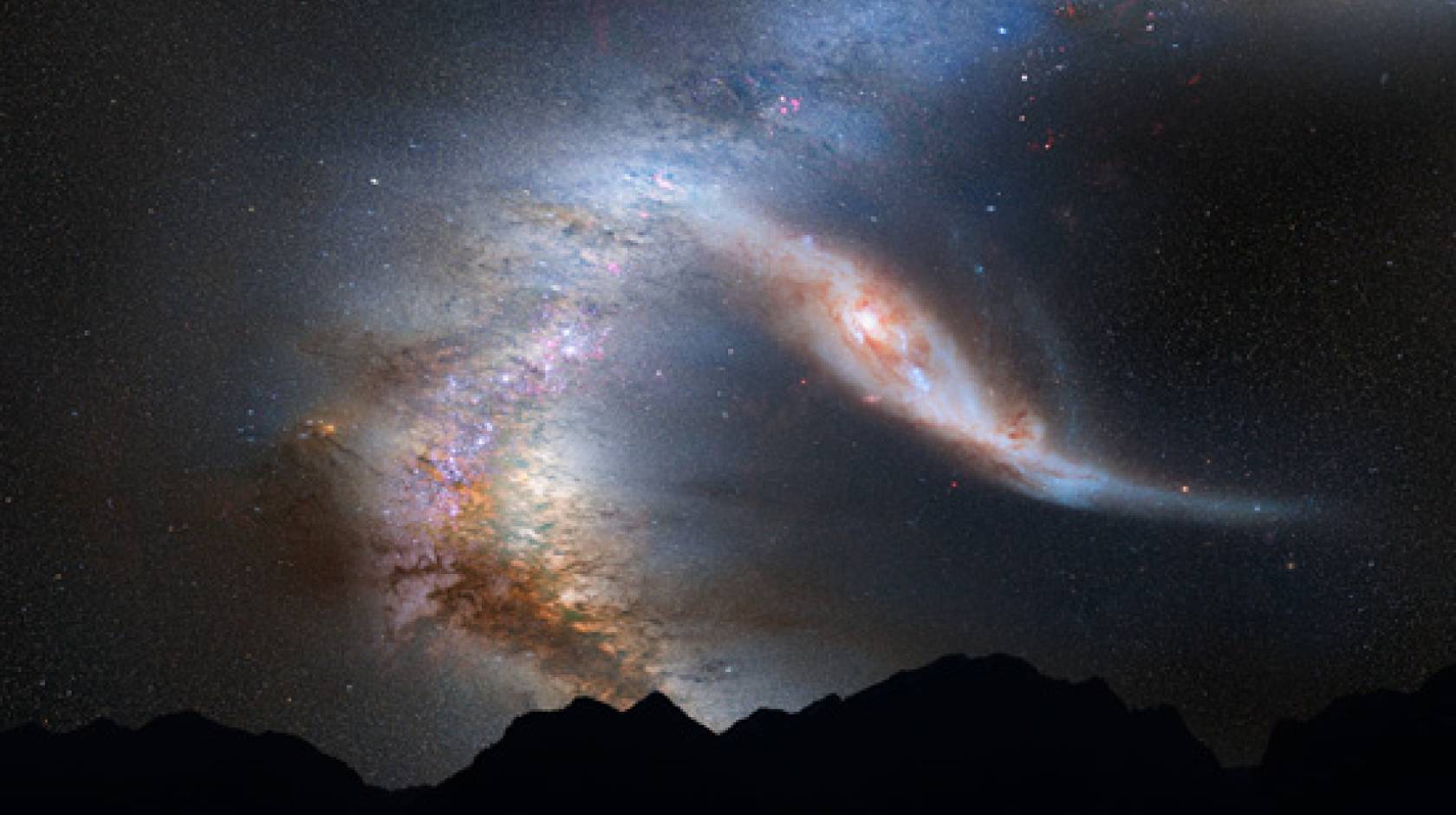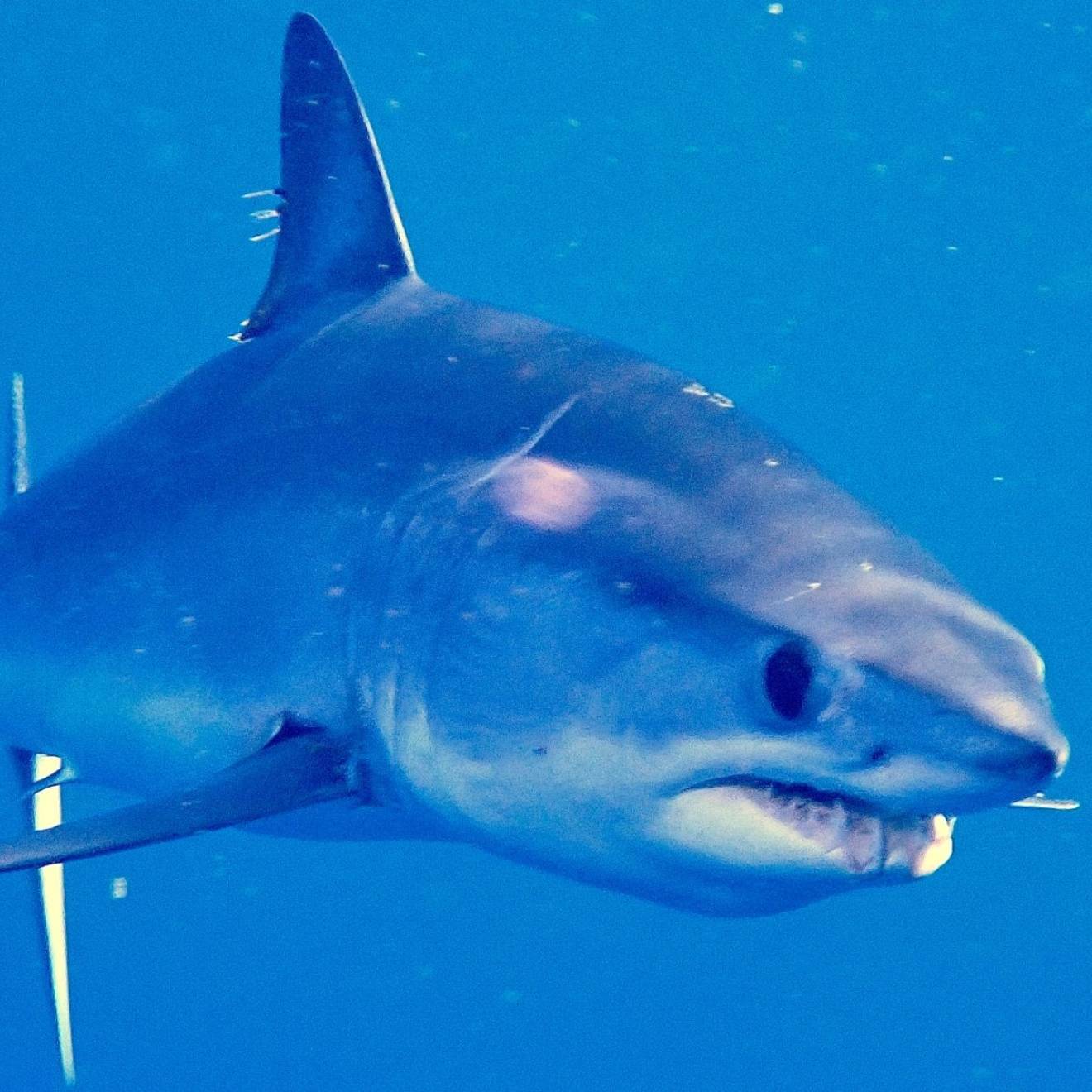Tim Stephens, UC Santa Cruz

Our galactic neighbor the Andromeda galaxy is on a collision course with our own Milky Way galaxy, according to new observations by a team of astronomers using the Hubble Space Telescope.
Also called M31, the Andromeda galaxy is the closest spiral galaxy to the Milky Way and the largest in the local group of galaxies. Painstaking measurements of its motion show that it will collide with the Milky Way about 4 billion years from now. M31 is now 2.5 million light-years away, but inexorably drifting ever nearer to us under the mutual pull of gravity between the two galaxies.
Puragra Guhathakurta, professor of astronomy and astrophysics at UC Santa Cruz, said astronomers have long speculated that the two galaxies would eventually collide. "Now we've shown that a collision is inevitable," he said.
The Hubble observations are reported in a paper to be published in the Astrophysical Journal. Guhathakurta, who has been studying the Andromeda galaxy for 15 years, is a coauthor of the paper. He helped plan the study with Roeland van der Marel of the Space Telescope Science Institute (STScI), who led the investigation. In order to measure the motion of Andromeda's center of mass with respect to the Milky Way, it was necessary to correct for how Andromeda's stars are moving within the galaxy. To do this, the team used data and models developed by the SPLASH collaboration led by Guhathakurta.
The Milky Way is destined to get a major makeover during the encounter with Andromeda, but our solar system is in no danger of being destroyed. Computer simulations derived from Hubble's data show that it will take another 2 billion years for the interacting galaxies to completely merge together under the tug of gravity, reshaping them into a single elliptical galaxy.
Although the galaxies will plow into each other, stars inside each galaxy are so far apart that they will not collide with other stars during the encounter. However, the stars will be thrown into different orbits around the new galactic center. Simulations show that our solar system will probably be tossed much farther from the galactic core than it is today.
To make matters more complicated, M31's small companion, the Triangulum galaxy (M33), will join in the collision and perhaps later merge with the M31/Milky Way pair. There is a small chance that M33 will hit the Milky Way first.
It has long been known that M31 is moving toward the Milky Way at about a 250,000 miles per hour. This measurement was made using the Doppler effect to measure how starlight from the galaxy has been compressed by Andromeda's motion toward us. It had remained uncertain, however, whether the far-future encounter would be a near miss, a glancing blow, or a head-on smashup. This depends on how much sideways or tangential motion M31 has. Until now, astronomers have not been able to measure M31's sideways motion on the sky, despite attempts dating back more than a century.
The Hubble team led by van der Marel conducted extraordinarily precise observations of M31 that remove any doubt that it is destined to collide and merge with the Milky Way. This was accomplished by repeatedly observing select regions of the galaxy over a five- to seven-year period. Two related papers published together with the new observations include one describing the measurement technique and another presenting the results of computer simulations that show the consequences of the galactic merger.
In a computer simulation in which M31 slams into the Milky Way head-on, the stars are all scattered into different orbits. The stellar populations of both galaxies are jostled, and the Milky Way loses its flattened pancake shape. The galaxies' cores merge, and the stars settle into randomized orbits to create an elliptical-shaped galaxy.
The science team that did the investigation is led by van der Marel (STScI) and includes S.T. Sohn and J. Anderson (STScI), G. Besla (Columbia University), M. Fardal (University of Massachusetts, Amherst), R.L. Beaton (University of Virginia, Charlottesville), Thomas M. Brown (STScI), P. Guhathakurta (UC Santa Cruz), and T.J. Cox (Carnegie Observatories).

